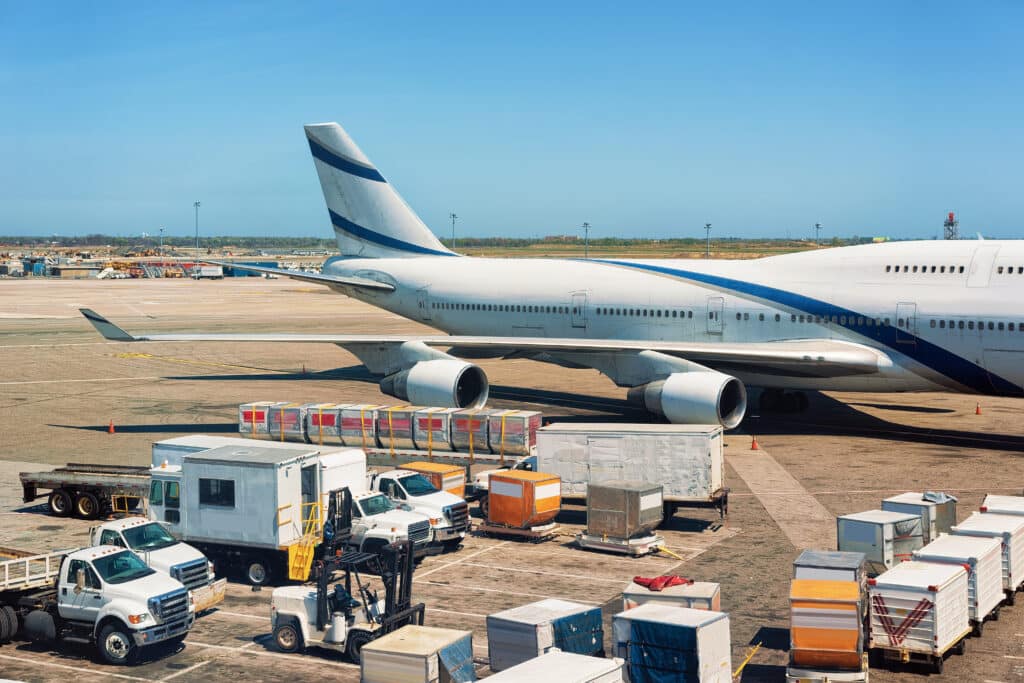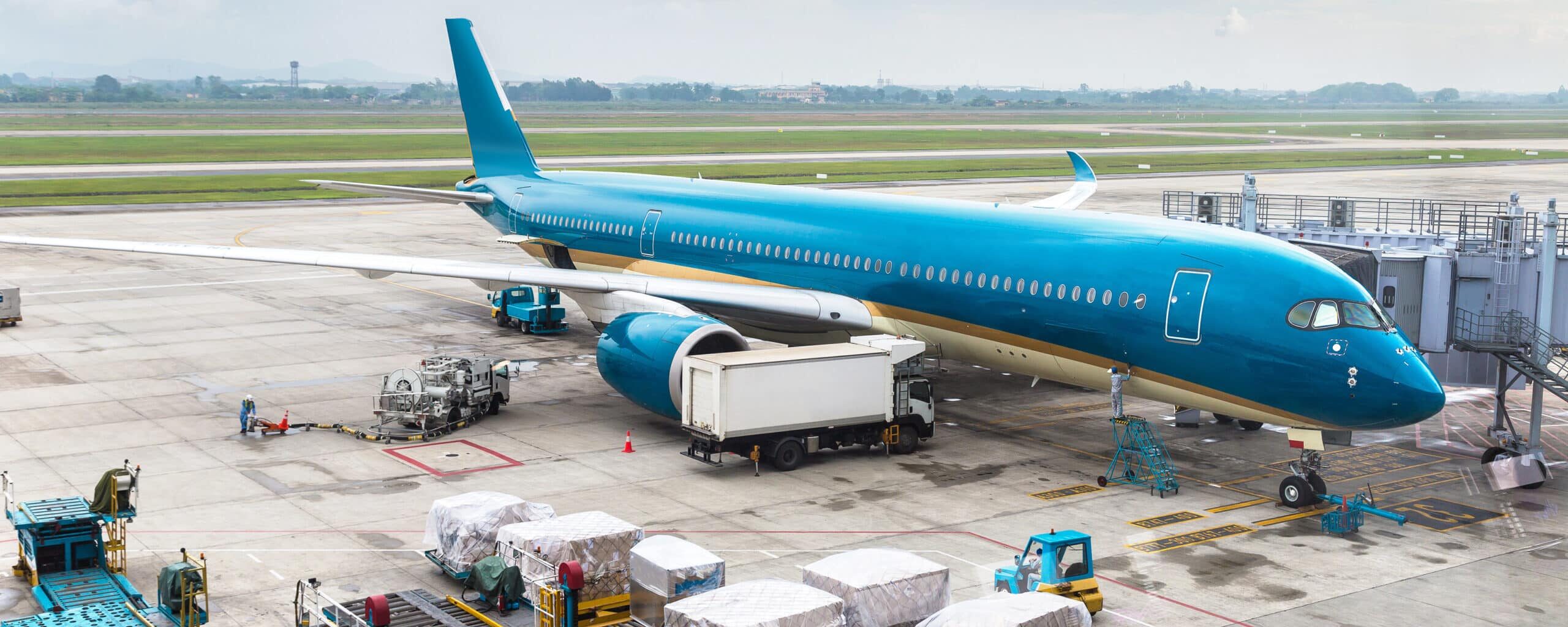The air freight market is evolving fast, driven by shifting global trade dynamics and rising demand for speed.
As businesses navigate supply chain disruptions, understanding air freight market trends becomes more crucial than ever.
Global goods trade saw a 3.6% increase in 2024, playing a major role in the surge in air cargo demand.
In 2025, we’re seeing increased reliance on air freight, sustainable aviation fuel (SAF), and alternative routes to combat congestion.
But what does this mean for shippers, carriers, and the overall supply chain?
Whether you’re managing international shipments or optimizing last-mile delivery, keeping up with these air freight market trends will help you stay ahead of the competition.
From emerging trade lanes to new capacity challenges, this year is shaping up to be a game-changer.
So, what’s next? We’ll break down the key air freight market trends shaping the industry and what they mean for businesses moving forward.
Understanding the Air Cargo Market in 2025
The air cargo market is in a state of rapid change, driven by economic shifts, capacity constraints, and evolving logistics strategies.
The global air cargo industry saw another strong month of growth, with demand rising 6.1% year-over-year. This steady momentum has now continued for 17 months straight.
Freight rates continue to fluctuate, influenced by fuel prices, geopolitical factors, and supply chain disruptions.
Meanwhile, increased demand for speed and efficiency is pushing carriers to adopt more advanced tracking and automation technologies.
Sustainability is also playing a bigger role, with airlines exploring alternative fuels and carbon reduction initiatives.
At the same time, regulatory changes and trade policies are impacting global cargo routes, forcing logistics providers to rethink their strategies.
As these factors shape the industry, businesses must stay agile to navigate challenges and seize new opportunities.
In the next sections, we’ll explore the air cargo market trends defining 2025 and what they mean for shippers, carriers, and the broader supply chain.
Air Freight Cargo Trends You Should Know About

A company expecting its usual shipment finds out last-minute that capacity is tight and costs have skyrocketed.
Sound familiar? That’s the reality many businesses face. But those who understand the bigger picture can plan smarter, avoid costly delays, and make the most of new opportunities.
Now we will break down what’s shaping the air cargo market trends and how businesses can stay one step ahead.
1. Air Freight Demand Has Peaked
The ongoing Red Sea situation and potential labor strikes have significantly boosted air freight demand.
With disruptions in ocean shipping routes and increased risks in maritime transport, many shippers have turned to air freight as a more reliable alternative.
However, experts believe this surge has now leveled off, signaling that the peak impact on air cargo demand may have already passed.
Here’s why air freight saw a surge:
- Red Sea Disruptions: Attacks on vessels and geopolitical instability in the region have led to longer transit times for ocean freight, pushing some shippers to opt for air transport.
- Supply Chain Uncertainty: Delays in ocean shipping caused many businesses to prioritize speed, increasing reliance on air freight.
- Higher Costs & Capacity Limits: The shift from sea to air created temporary spikes in freight rates, but with market adjustments, air cargo trends suggest that demand is stabilizing.
While air freight remains a critical solution for time-sensitive shipments, shippers should watch air cargo trends closely as the market shifts in response to evolving global conditions.
2. Tight Capacity Amid Rising Demand
Air cargo capacity is expected to grow by only 4% to 5%, while demand is projected to rise between 6% and 10%, depending on the trade lane.
This supply-demand gap is putting pressure on freight availability and rates, particularly in key regions like China, the Indian subcontinent, the Middle East, and Vietnam.
- Capacity Challenges in Europe-Asia Routes: Several European airlines, including Lufthansa and British Airways have reduced or suspended China routes due to the Russia-Ukraine conflict. Avoiding Russian airspace adds up to two hours of flight time, increasing fuel costs and reducing efficiency.
- China’s Competitive Advantage: Chinese carriers, which can still fly over Russia, are gaining market share by offering faster and more cost-effective routes.
- Impact on Global Supply Chains: As demand continues to outpace capacity, shippers should closely monitor air cargo trends to secure space and manage costs effectively.
With 35+ years of experience, Newl helps businesses navigate these shifting trends by providing reliable freight and warehousing solutions.
3. Shifting Customer Expectations
Customer demands are becoming more complex, with a growing need for customized air freight solutions.
While cost has always been a deciding factor, reliability is now just as critical.
Disruptions in global supply chains have made consistency a top priority, and this trend is expected to continue through 2024.
As the air freight market trends evolve, long-term contracts between shippers and cargo agents are becoming the norm.
Instead of relying on last-minute spot bookings, businesses are securing monthly, quarterly, and even yearly agreements to ensure stability in their logistics operations.
4. Stronger Sourcing Strategies
With market uncertainties and supply chain disruptions, manufacturers are rethinking their sourcing strategies.
Many are moving raw material suppliers closer to their target markets to reduce risks and improve efficiency.
This shift is also driving a regionalized approach to production, where companies seek low-cost but reliable locations for manufacturing.
To track air freight more effectively, businesses are focusing on flexible logistics networks such as Newl that can quickly adapt to changing conditions.
Finding resilient supply chain partners is key to maintaining smooth operations.
5. Growing Focus on Sustainability
Sustainability is no longer an option, it’s a necessity.
With new environmental regulations in North America and Europe, companies are working toward carbon-neutral goals by 2050.
This shift is pushing businesses to adopt eco-friendly logistics solutions that reduce emissions and improve overall efficiency.
Many companies are now integrating multimodal transportation, combining land, sea, and air freight to lower their carbon footprint.
As part of the air freight market trends, businesses are also investing in cleaner fuel options like sustainable aviation fuel (SAF), a renewable alternative to traditional jet fuel that significantly cuts greenhouse gas emissions.
Alongside SAF, companies are optimizing shipping routes to reduce environmental impact even further.
To meet sustainability targets while ensuring efficiency, companies must track air freight performance closely and choose logistics solutions that balance speed, cost, and eco-friendliness.
Smarter Air Cargo, Powered by Newl
Speed, reliability, and efficiency, air freight is all about staying ahead.
With rising demand and shifting global trade patterns, businesses need a logistics partner that delivers more than just space on a plane. That’s where Newl comes in.
With 35+ years of experience, we’ve built a network that keeps air cargo moving seamlessly.
Our partnership with Temu means we’re already powering some of the biggest names in global e-commerce now, we’re here to do the same for you.
Why Newl? Because Air Freight Shouldn’t Slow You Down
- Fast, Reliable Shipping
We move cargo efficiently, ensuring your shipments stay on track—even in high-demand seasons.
- Priority Access & Strategic Partnerships
With Temu and top-tier carriers, we secure the best routes and rates to keep your supply chain running smoothly.
- Full Visibility & Hands-on Support
Track your shipments in real-time with proactive updates and dedicated logistics experts at your side.
When speed matters, Newl delivers. Let’s move your air cargo smarter, connect with us today. ️
Final Thoughts
The air cargo industry is evolving, shaped by changing trade patterns, rising demand, and new challenges in global logistics.
Businesses that stay informed about air freight market trends can better navigate disruptions, optimize their supply chains, and make smarter shipping decisions.
Whether it’s adjusting to capacity constraints, exploring sustainable options, or leveraging technology for better tracking, the key to success is adaptability.
As air freight continues to grow, staying ahead of these shifts will be crucial for businesses looking to maintain efficiency and reliability in their operations.
Frequently Asked Questions
1. How do airlines determine air freight rates?
Air freight rates are influenced by several factors, including fuel costs, demand, cargo weight and volume, and available capacity.
Seasonal demand, route congestion, and geopolitical events can also cause fluctuations.
2. What’s the difference between general cargo and special cargo?
General cargo includes everyday goods like electronics, clothing, and machinery, while special cargo requires extra handling due to its nature.
Sensitive cargo includes perishable goods, hazardous materials, live animals, and temperature-sensitive shipments.
3. How is technology improving air freight logistics?
AI, automation, and real-time tracking are making air freight more efficient.
Digital freight booking platforms, predictive analytics for capacity planning, and blockchain for secure documentation are just a few innovations transforming the industry.
